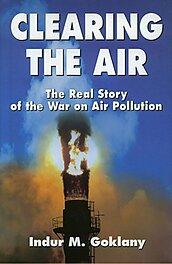America’s air quality is better today than ever before in modern history and continues to steadily improve. How did this remarkable turnaround come about?
Basing his conclusions on a painstaking compilation of long-term empirical data on air quality and emissions data extending from the pre- federalization era to the present (some dating back a century), Goklany challenges the orthodoxy that credits federal regulation for improving air quality.
He shows that the air had been getting cleaner prior to—and probably would have continued to improve regardless of federalization. States and localities, after all, have always been engaged in a race to improve the quality of life, which means different things at different stages of economic development. Goklany’s empirical data refute once and for all the race-to-the-bottom rationale for centralized federal regulation.
Moreover, technological advances and consumer preferences continue to play important roles in improving air quality. Goklany accordingly offers a regulatory reform agenda that would improve upon the economic efficiency and environmental sensitivity of air quality regulation.
